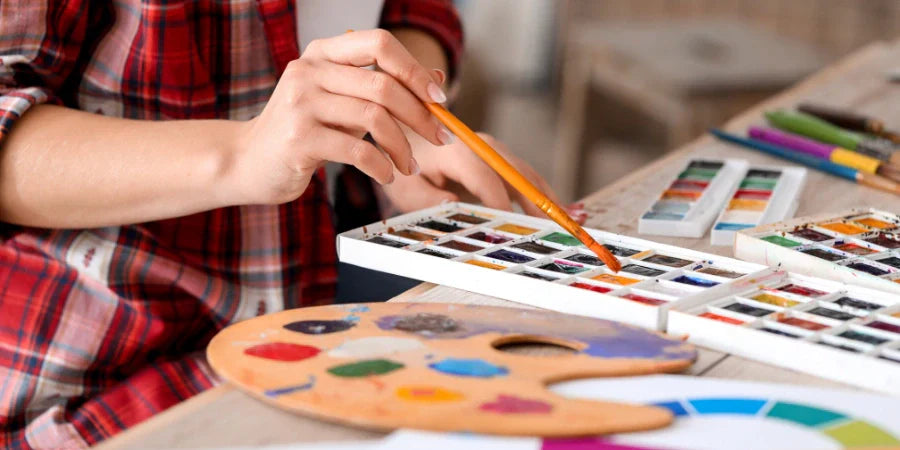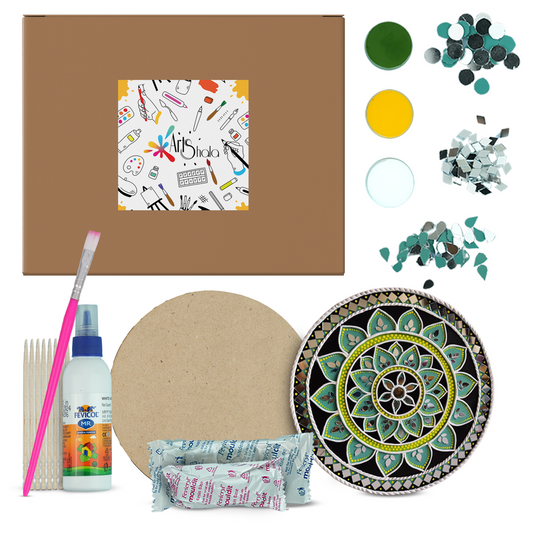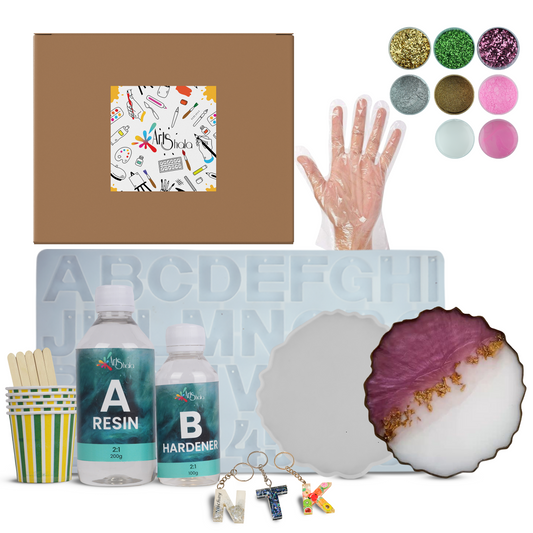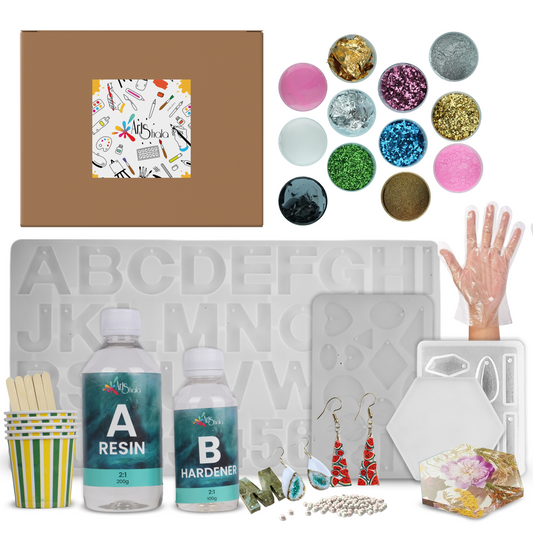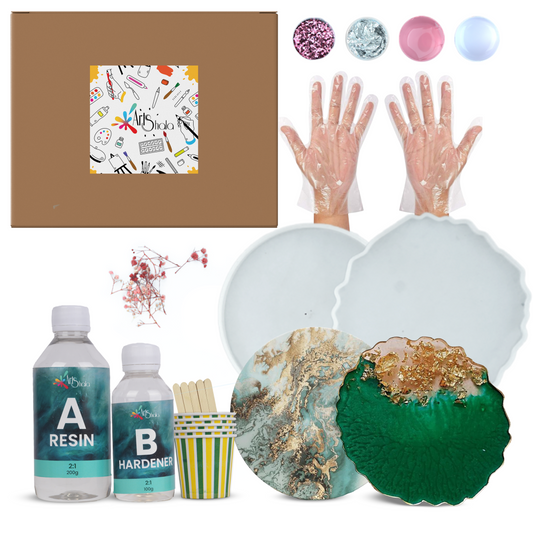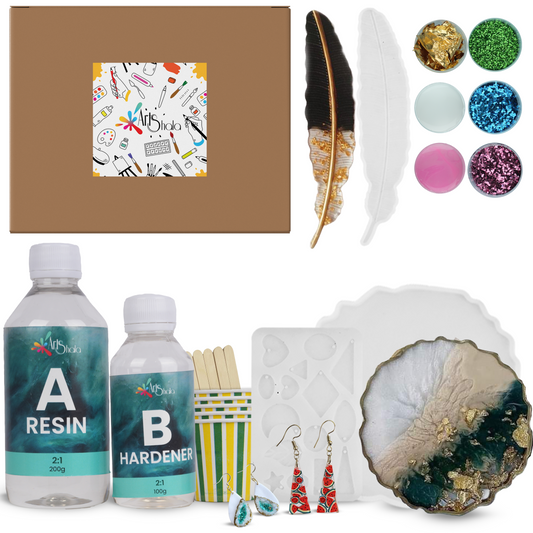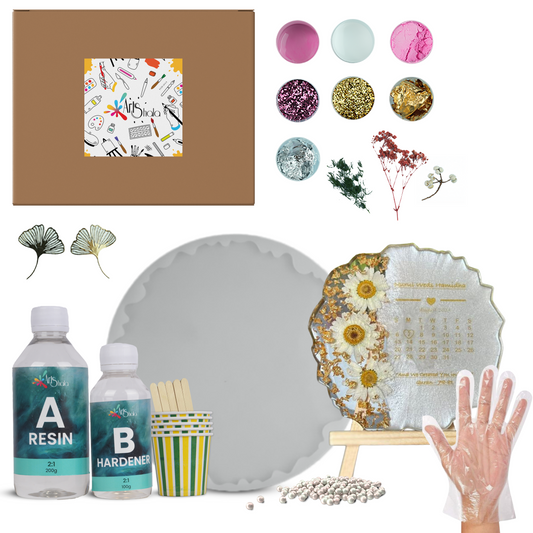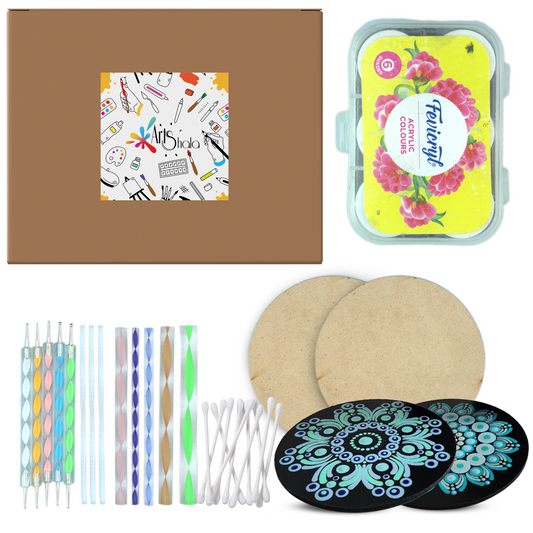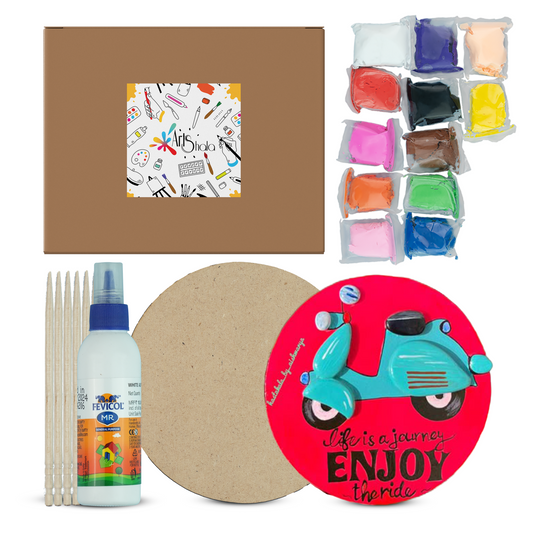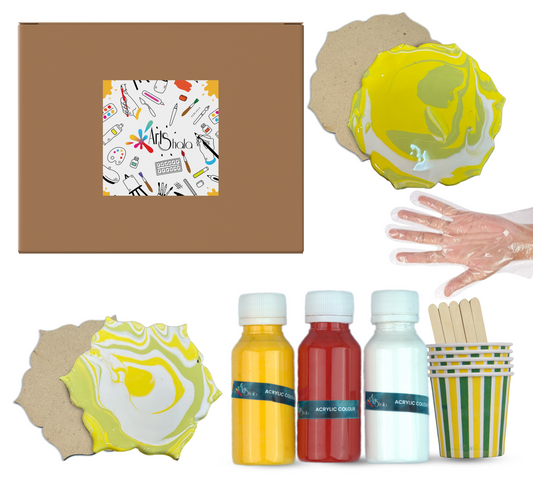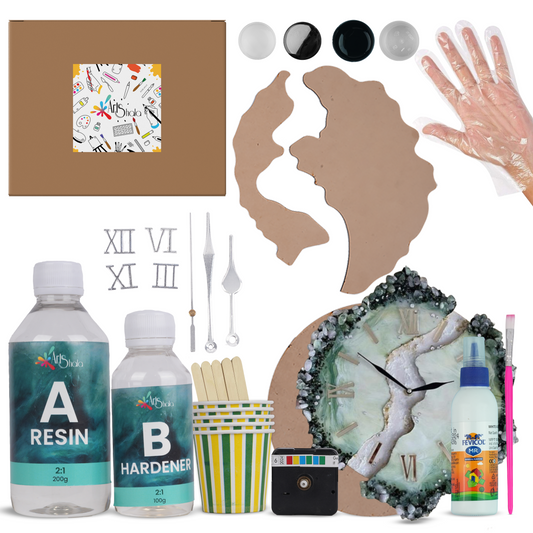Can I Mix Acrylic Paint and Poster Paint?
Artists often work with various mediums and materials when painting. One common question is whether acrylic paint can be mixed with poster paint. This inquiry is particularly relevant for beginners or those working with limited resources. In this blog, we will examine the traits of both acrylic and poster paints, the implications of mixing them, and practical advice for artists. To learn more about such techniques, enrol in an acrylic painting workshop.
Understanding Acrylic and Poster Paints
Acrylic Paint
Acrylic paint is a quick-drying paint composed of pigment particles dispersed in a water-based acrylic polymer. It is known for its versatility, vibrant colours, and ability to adhere to various surfaces. Key characteristics include:
-
Fast Drying Time: Acrylics dry quickly, allowing artists to layer colours without long wait times.
-
Water Resistance: Once dry, acrylic paint becomes water-resistant, making it suitable for outdoor projects.
-
Flexibility: Acrylics can mimic the appearance of oil and watercolour paints depending on diluting or mixing.
-
Plastic-like Finish: Dried acrylic forms a flexible, plastic-like film, which can be advantageous or disadvantageous, depending on the application.
Poster Paint
Poster paint, often called tempera paint, is a water-based paint commonly used in schools and by children. It is known for its bright colours and ease of use. Key characteristics include:
-
Chalky Finish: Poster paint dries to a matte, chalky finish, which can be less durable than acrylic.
-
Re-wettability: Unlike acrylics, poster paints can be reactivated with water even after drying, making them suitable for projects that require easy corrections.
-
Less Pigment Concentration: Poster paints generally contain less pigment than acrylics, producing less vibrant colours.
Can You Mix Acrylic and Poster Paint?
The short answer is it is not recommended to mix acrylic paint with poster paint. Here’s why:
-
Drying and Adhesion Issues: Acrylic paint dries to form a flexible, plastic-like layer, while poster paint remains chalky and water-soluble. When mixed, the two can create an unstable mixture that may not adhere well to surfaces, especially if applied in layers. This can lead to peeling or breaking over time.
-
Colour and Texture Mismatch: The texture and finish of the two paints differ significantly. Acrylics offer a glossy or semi-gloss finish, while poster paints dry to a flat, matte finish. Mixing them can result in an inconsistent appearance that may not meet the artist's expectations.
-
Layering Problems: If you plan to layer your paints, using both types can lead to complications. Since acrylics dry quickly and form a solid layer, applying poster paint over acrylic can result in poor adhesion and potential lifting of the underlying layers.
How to Mix Acrylic and Poster Paint (If You Must)
If you decide to experiment with mixing these two paints, here are some tips:
-
Start Small: Begin with small quantities to avoid wasting paint.
-
Test on a Scrap Surface: Experiment on a piece of cardboard or scrap paper to see how the paints interact.
-
Layer Carefully: If layering, ensure the previous layer is completely dry before applying the next.
-
Consider Mediums: Using acrylic mediums can help modify the paints' properties and improve compatibility.
-
Understand the Limitations: Be aware that the final result might not meet your expectations.
Can Mixing Affect the Longevity of the Artwork?
Mixing these two types of paint compromises the longevity of the artwork. Acrylics are designed for durability, while poster paints are not. When combined, the more fragile nature of poster paint can undermine the stability of the acrylic paint, leading to a shorter lifespan for the artwork.
Will Poster Paint's Chalkiness Impact Acrylic Texture?
Yes, the chalkiness of poster paint can significantly affect the overall texture of an acrylic painting. Here’s how this interaction plays out:
Texture Differences
-
Chalky Finish of Poster Paint: Poster paint dries to a matte, chalky finish, which can create a different texture compared to the smooth, often glossy finish of acrylic paint. When mixed, the chalkiness can disrupt the uniformity of the acrylic's texture, leading to an uneven surface.
-
Layering Issues: If poster paint is applied over acrylic or mixed in layers, the chalky nature of the poster paint can cause adhesion problems. Acrylic paint dries to form a solid, plastic-like layer, while poster paint remains porous and water-resistant. This disparity can lead to cracking or peeling, affecting the overall texture and integrity of the artwork.
-
Impact on Visual Effects: The different finishes can alter how light interacts with the surface. For example, the matte finish of poster paint can dull the vibrancy of acrylic colours, potentially resulting in a less dynamic visual effect. This could be particularly noticeable in pieces where light reflection is a key component of the design.
When Might Mixing Be Acceptable?
While mixing acrylic and poster paint is generally discouraged, there are a few scenarios where it might be considered:
-
Experimental Projects: If you are simply experimenting or creating a project where durability is not a concern, you might mix the two for a specific effect. For example, using poster paint for a base layer and adding acrylics on top can work if you are careful about application.
-
Creating Washes: Some artists have successfully used acrylics to create washes or diluted effects with poster paint. This technique can yield interesting results but requires a good understanding of both mediums.
-
Budget Constraints: If you have restricted resources and need to achieve a specific colour, mixing a small amount of acrylic into poster paint can be a temporary solution. However, this method should be used sparingly and for non-critical works.
Alternatives to Mixing
If you are looking for ways to achieve similar effects without mixing acrylic and poster paints, consider the following alternatives:
-
Use Acrylic Paints Exclusively: Investing in a set of acrylic paints can provide you with a wide range of shades and the ability to create various textures and finishes. Acrylics are versatile and can be used for detailed work and broader strokes.
-
Create Your Own Colours: If colour matching is a concern, you can create your own shades by mixing different colours of acrylic paint. This allows for more control over the final outcome.
-
Explore Other Mediums: If poster paint is appealing due to its ease of use, consider other water-based paints like gouache, which offers a similar finish but is more compatible with acrylics.
Conclusion
While it may be tempting to mix acrylic and poster paints, the potential issues with adhesion, finish, and durability make it an unwise choice for most artistic endeavours. Understanding the properties of each type of paint can help you make better decisions that improve your artwork rather than compromise it. For best results, it is advisable to stick with one kind of paint for a project or explore alternatives that can achieve the desired effects without the complications of mixing incompatible mediums. Contact Us to learn more about this art form or visit Arts Shala’s website.


